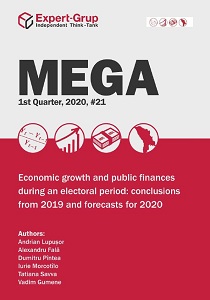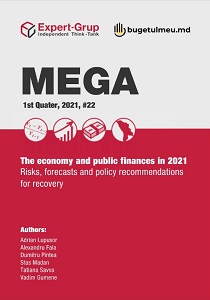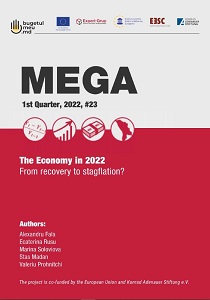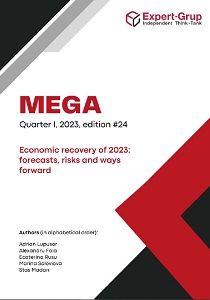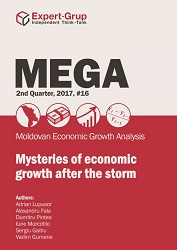
MEGA - Moldova Economic Growth Analysis № 16 / 2017
MEGA - Moldova Economic Growth Analysis № 16 / 2017
The economic growth of 2016 was higher than forecasted, but lower than the optimal level. The Gross Domestic Product of the Republic of Moldova increased by 4.1% in 2016, exceeding the forecasts from the previous MEGA publication (3.4% according to the baseline scenario). This evolution was determined by the higher-than-expected increase in consumption and exports of goods and services, which grew quicker than imports. These developments led to higher-than-expected increases in services and industry. At the same time, the slumps in investment activity and constructions were milder then expected. Also, the recovery of agriculture after the 2015 drought gave impetus for the economic growth in 2016. However, the GDP growth of 4.1% is much lower than the optimal level (~7%), especially given the low comparison base (in 2015 the GDP decreased by 0.5%). Moreover, this level was not much higher than in other countries from Central and Eastern Europe that have a GDP per capita several times bigger than Moldova: Romania grew quicker (+4.8%) with a GDP per capita of almost 5 times higher, Bulgaria grew by 3.4% with a GDP per capita 4 times higher, and Slovakia - by 3.3% with a GDP per capita 9 times higher.
More...
